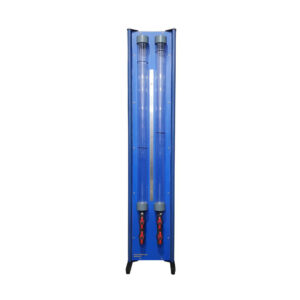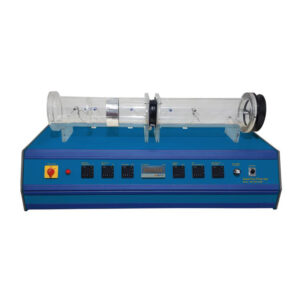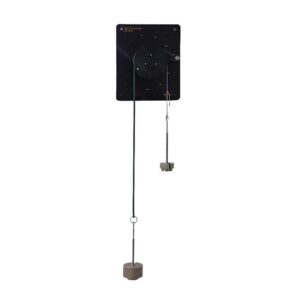Fine gas bubbles are perfectly suited to visualising flow fields. Due to Reynolds scaling, many flow processes that occur in air can also be demonstrated by experiments in water. The experimental unit FM-1849-80 can be used to visualise laminar and turbulent flow processes in a water channel. Hydrogen bubbles are generated electrolytically at a cathode made of thin platinum wire. A stainless steel plate is used as an anode. Small bubbles that detach from the platinum wire are easily carried along by the flow due to their small size. An interchangeable model is used in the shallow water channel and flow travels around and through it.
White LED illumination is located along the experimental section on the walls of the water channel. The indirect illumination results in a high-contrast image. The experiments run with a low flow velocity. Flow separation and vortex formation are clearly visible. Different drag bodies or changes in cross-sections are used as models, e.g. cylinder, aerofoil profile and rectangle. A flow straightener and a layer of glass spheres ensure a smooth and low-turbulence flow. The power for the electrolysis, its pulse and pause duration and the flow velocity in the water channel can all be adjusted.




